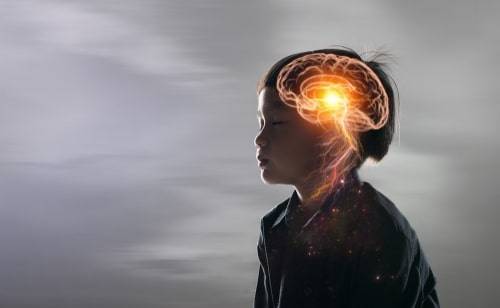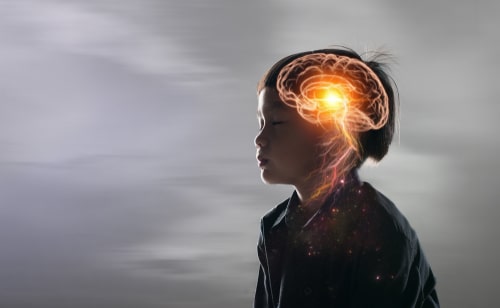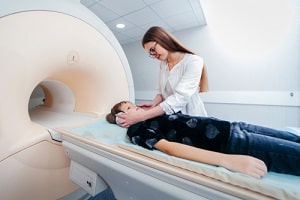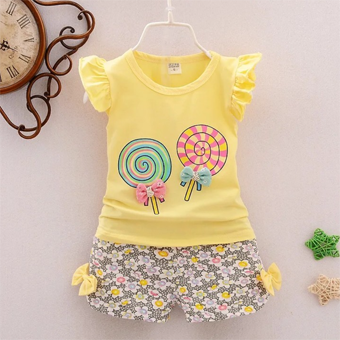Evidence that spanking alters the brain

© 2021 Gwen Dewar, Ph.D., all rights reserved

As disciplinary tactics go, spanking is ineffective, and it may be harmful, too. A new study suggests that spanking alters the brain, making kids more reactive to potential threats, and more at risk for developing behavior problems.
Over the years, I’ve followed the research on spanking, and the evidence has been quite consistent.
Spanking doesn’t improve behavior problems. If anything, it appears to makes them worse.
It’s part of the larger trend for physical punishment in general. When researchers have reviewed the best-designed studies — conducted in countries throughout the world — they’ve found that physical punishment is not associated with positive outcomes over time.
On the contrary, when kids are subjected to physical punishment, they tend to experience more behavior problems in the future. And the effect appears to be dose-dependent:
The more frequently parents use physical punishment on a child, the more severe the child’s behavior problems tend to become (Heilmann et al 2021).
That’s what researchers see when they focus on external behavior. You can read more about it in my article, “Spanking children: Why does it happen, and what are its effects?”
What about the internal effects of spanking? What, if anything, does spanking do to the brain?
Researchers have long understood that harsh parenting and abuse alters a child’s brain. When kids are exposed to domestic violence — when they are physically or sexually assaulted, or witness a family member’s abuse — their brains adapt.
In lab tests, they show heightened neural responses to cues of threat, including the faces of people who look frightened.

Show these kids a fearful face, and the amygdala — a part of the brain that specializes in processing fear and anxiety — becomes especially reactive. In addition, these kids experience greater activation in several key regions of the prefrontal cortex.
But that’s what happens with children who endure serious abuse.
Spanking is a less intense, less extreme form of physical punishment. So we might expect that it would have a less powerful impact on the brain. What does the evidence tell us?
Recently, Jorge Cuartas and his colleagues studied the responses of more than 170 children.
The kids were between the ages of 10 and 12, and they varied in their personal histories.
- Some kids (26 of them) had experienced severe physical or sexual abuse.
- Other kids (40) said they hadn’t ever experienced such abuse, but they had been spanked more than once in the past.
- The remaining kids (107) said they had neither experienced abuse nor spanking.
Did a child’s personal history with abuse or spanking have any effect on brain activity?
To find out, the researchers asked kids to lie down in an fMRI scanner.

Then — as the researchers scanned the children’s brains — the kids watched faces flash on a computer screen.
Some faces displayed fearful expressions. Other faces displayed calm, neutral-looking expressions.
As the kids watched, their brains processed the visual information. And everybody — kids in all three groups — reacted more to fearful faces than to calm faces.
But this bias, this tendency to react more to fearful faces, was less dramatic in kids who had never been abused or spanked.
And though children with a history of spanking didn’t show signs of increased activity in the amygdala, they shared a pattern of heightened activity in certain parts of the prefrontal cortex.
For example, both the abused kids and the spanked kids showed greater activation in
- the dorsomedial prefrontal cortex (dmPFC), which is part of the mentalizing network, a network that helps us infer the mental and emotional states of others;
- the dorsal anterior cingulate cortex (dACC), which is part of the salience network, a network that helps us pay close attention to emotional stimuli; and
- the left middle front gyrus (MFG), a brain region that is “frequently engaged during effortful attempts to regulate emotional responses” (Cuartas et al 2021).
What does this mean?
The results are consistent with the idea that spanking — like more severe abuse — makes kids more vigilant. Their brains devote more processing to identifying and interpreting potential threats.
It’s a response designed to help kids take defensive action. It may help them respond more quickly to danger.
But if a child lives this way on a day-to-day basis — always on edge, ready to assume the worst — it could lead to trouble.
As Cuartas and his colleagues note, it might make kids more emotionally reactive. It might make it harder for them to develop good emotional regulation skills. It might train kids to adopt a “hostile attribution bias,” a tendency to assume that other people mean them harm. And it might put kids at “increased risk for psychopathology” (Cuartas et al 2021).
Too speculative?
Well, this is a single study, and the first of its kind. Nobody before has tried to measure differences in brain activity as they relate to spanking. More research is needed, as the researchers themselves note.
But when we consider we already know about spanking — about that tendency for behavior problems to worsen over time — I think we have more than enough information to guide us.
If spanking were a consumer product, we’d consider it debunked — snake oil. If it was a prescription therapy, it wouldn’t survive the medical trials. We’d rightly reject it.
Yet spanking is still considered a normal disciplinary tactic in countries throughout the world. It’s still practiced by a sizeable percentage of parents in the United States. In one recent survey, nearly 40% of American parents with children between the ages of 2 and 4 years said they spanked their kids at least sometimes (Mehus and Patrick 2021).
So can we spread the word about spanking? I hope so. There are other, less worrisome ways to deal with problematic behavior.
For a guide to these alternatives, see my article, “Disruptive behavior problems: 12 evidence-based tips for handling aggression, defiance, and acting out.”
References: Evidence that spanking alters the brain
Cuartas J, Weissman DG, Sheridan MA, Lengua L, and McLaughlin KA. 2021. Corporal Punishment and Elevated Neural Response to Threat in Children. Child Dev. 92(3):821-832.
Heilmann A, Mehay A, Watt RG, Kelly Y, Durrant JE, van Turnhout J, Gershoff ET. 2021. Physical punishment and child outcomes: a narrative review of prospective studies. Lancet S0140-6736(21)00582-1.
Mehus CJ and Patrick ME. 2021. Prevalence of Spanking in US National Samples of 35-Year-Old Parents From 1993 to 2017. JAMA Pediatr. 175(1):92-94.
content last modified 7/12/21
image of boy with internal brain imagery by sutadimage / shutterstock
image of frightened man cropped from photo by SIphotography / istock
image of child being prepped for MRI scan by Andrewshots / shuttstock















